
On 3 Jul 1782, Pierre Berthier was born, the French mineralogist and mining engineer who discovered a new mineral (23 Mar 1821) near the village Les Baux de Provence in southern France, from which it was named bauxite. Although the discovery went almost unnoticed then, it has since become an important ore for the extraction of aluminium, now one of the most useful of metals. Although aluminium is the most abundant metal on the Earth’s surface, it remained unknown for many centuries, because it is especially difficult to extract.
When J.A. Price gave an address on 18 Jan 1886, reviewing the History and Uses of Aluminium, he did not know that a month later, Charles M. Hall would succeed in inventing a novel electrolytic process by which aluminium was to become an inexpensive everyday material, as we know it today. World bauxite production is now 100 million tonnes.
Scientific American printed the text of Professor Price’s address. It makes an interesting read, because the process to extract aluminium as then known, was about to change dramatically.

On 3 Jul 1961, the explosion of a SL-1 military test reactor in Idaho was the world’s first fatal nuclear accident. SL-1 was an experimental reactor built in the late fifties at the Idaho National Reactor Testing Station. It was a prototype for small, portable reactors the Army hoped could power radar stations along the Distant Early Warning (DEW) radar line along the northern edge of the continent during the Cold War. Today's book pick is: Proving the Principle: A History of the Idaho National Engineering and Environmental Laboratory, 1949-1999, by Susan M. Stacy, which includes a brief account of the accident, without speculation. The larger story covered by the book is how research at the Idaho Lab directly resulted in, among many other things, nuclear reactors producing electricity and nuclear propulsion of subs and carriers. There was even a nuclear powered aircraft project which fortunately never flew.
It is available from Amazon, typically about New from $73.00. Used from $7.50. (As of earlier time of writing - subject to change.)
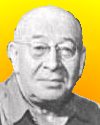 | There are two ways to slide easily through life; to believe everything or to doubt everything. Both ways save us from thinking. |
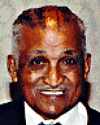 | On my tests I used to always give as my first question, define chemistry, because I thought every student should know what they were taking. I do this quite often. |
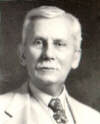 | No paleogeographic map is worth the paper on which it is printed unless it depicts the actual state of affairs for a limited geologic time, say several hundred thousand years. |
| Before you look at today's web page, see if you can answer some of these questions about the events that happened on this day. Some of the names are very familiar. Others will likely stump you. Tickle your curiosity with these questions, then check your answers on today's web page. | |
| Births | |
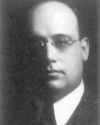 | Jesse Douglas, born 3 Jul 1897, was an American mathematician who was awarded one of the first two Fields Medals in 1936 for solving the Plateau problem. which had first been posed by the Italian-French mathematician Joseph-Louis Lagrange in 1760. What is the Plateau problem about? |
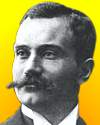 | On 3 Jul 1874, Johan Gunnar Andersson was born, the Swedish geologist and archaeologist whose studied sites prehistoric China. He was an adviser to the Geological survey of China, during excavations at Chou-k'ou-tien outside Peking. In 1921, at a cave near there, on the basis of bits of quartz that he found in a limestone region, he predicted that a fossil man would be discovered. Six years later, the first evidence of the fossil hominid Sinanthropu was indeed found there. By what name is the Sinanthropu hominid commonly known? |
| Deaths | |
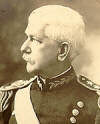 | A U.S. Army surgeon (1854-1920) contributed greatly to the building of the Panama Canal by introducing mosquito control to prevent yellow fever and malaria. In Cuba, he assisted in eliminating mosquito breeding grounds, then in 1904, he led the ten-year anti-mosquito campaign to wipe out yellow fever in Panama. Can you name this surgeon? |
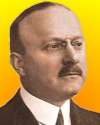 | A French engineer and industrialist (1878-1935) introduced Henry Ford’s methods of mass production to Europe. His initial work in the automobile industry with the Mors automobile firm was interrupted by World War I, during which he built a plant for mass production of munitions. After the war, he converted the factory for assembly of a small, inexpensive vehicle sold in France. The first car known by his name was introduced in 1919. The manufacturer is now present in fifty-seven countries. Can you name this car brand? |
| Events | |
 | On 3 Jul 1903, the first cable across the Pacific Ocean between Hawaii, Guam and Manila was completed and spliced at Manila, Philippine Islands. After testing, the first official message was sent the next day. This technological event ended Hawaii’s isolation by connecting it to the mainland U.S. and the rest of the world. The cable was a mainstay of communications into the early 1950s when newer technology rendered it obsolete. The cable route included establishing a cable station on an unpopulated island which became well-known in WW II. Can you name it? |
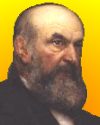 | On 3 Jul 1841, an English astronomer entered in his journal “Formed a design in the beginning of this week in investigating, as soon as possible after taking my degree, the irregularities in the motion of Uranus… in order to find out whether they may be attributed to the action of an undiscovered planet beyond it…” By Sep 1845 he sent location information on the new planet to Cambridge Observatory, but it was not acted upon. Instead, Urbain LeVerrier discovered Neptune on 23 Sep 1846, at Berlin. Can you name the English astronomer? |
Fast answers for the previous newsletter for July 2: production of energy in stars • crystal structure • eight • butterfat content of milk • it was cast to form floating pontoons • 120 m (416 ft).
 If you enjoy this newsletter, the website, or wish to offer encouragement or ideas, please send feedback by using your mail reader Reply button.
If you enjoy this newsletter, the website, or wish to offer encouragement or ideas, please send feedback by using your mail reader Reply button. Your click on a Facebook, StumbleUpon, or other social button on the site webpages is also a welcome sign of appreciation. Thank you for using them.
© This newsletter is copyright 2020 by todayinsci.com. Please respect the Webmaster's wishes and do not put copies online of the Newsletter — or any Today in Science History webpage. (If you already have done so, please remove them. Thank you.) Offline use in education is encouraged such as a printout on a bulletin board, or projected for classroom viewing. Online, descriptive links to our pages are welcomed, as these will provide a reader with the most recent revisions, additions and/or corrections of a webpage. For any other copyright questions, please contact the Webmaster by using your mail reader Reply button.
--
If you do not want to receive any more newsletters, Unsubscribe
To update your preferences and to unsubscribe visit this link
Executive Real Estate Business Class
-
"It was like a man with wings. It wasn't like anything you'd see on TV or in a monster movie." ...
About the publisher
Search This Blog
Blog Archive
-
▼
2021
(585)
-
▼
July
(50)
- Newsletter for Saturday 31 July.
- Newsletter for Friday 30 July.
- Power off and play this summer!
- Newsletter for Thursday 29 July.
- Newsletter for Wednesday 28 July.
- Newsletter for Tuesday 27 July.
- Newsletter for Monday 26 July.
- Newsletter for Sunday 25 July.
- Newsletter for Saturday 24 July.
- Newsletter for Friday 23 July.
- Newsletter for Thursday 22 July.
- Newsletter for Wednesday 21 July.
- Newsletter for Tuesday 20 July.
- Newsletter for Monday 19 July.
- The Machines That Built America Premieres Tonight
- Newsletter for Sunday 18 July.
- Newsletter for Saturday 17 July.
- Newsletter for Friday 16 July.
- Newsletter for Thursday 15 July.
- Newsletter for Wednesday 14 July.
- Newsletter for Tuesday 13 July.
- On This Day for July 12 - Geraldine Ferraro design...
- Newsletter for Monday 12 July.
- Inventing ‘The Machines That Built America’
- On This Day for July 11 - Duel between Aaron Burr ...
- Newsletter for Sunday 11 July.
- On This Day for July 10 - Telstar 1 launched, John...
- Newsletter for Saturday 10 July.
- On This Day for July 9 - Catherine the Great assum...
- Newsletter for Friday 9 July.
- New Season! Hope, Through History Podcast
- On This Day for July 8 - Vasco da Gama's first voy...
- Newsletter for Thursday 8 July.
- Ending soon: savings that pop! 🎆
- On This Day for July 7 - Hawaiian Islands annexed ...
- Newsletter for Wednesday 7 July.
- On This Day for July 6 - Anne Frank forced into hi...
- Newsletter for Tuesday 6 July.
- On This Day for July 5 - Israel's Law of Return pa...
- Newsletter for Monday 5 July.
- On This Day for July 4 - Declaration of Independen...
- Newsletter for Sunday 4 July.
- July 4th Sale at the HISTORY Store!
- On This Day for July 3 - Battle of Gettysburg ende...
- Newsletter for Saturday 3 July.
- On This Day for July 2 - Civil Rights Act signed, ...
- Newsletter for Friday 2 July.
- July 4th savings that pop!
- On This Day for July 1 - Dominion of Canada establ...
- Newsletter for Thursday 1 July.
-
▼
July
(50)
-
Blogroll
-
About
HistoryFact










0 comments:
Post a Comment